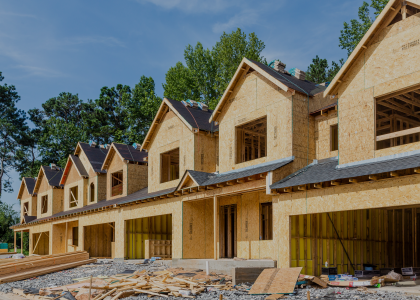Utilities’ energy efficiency programs have a proven record doing what they were originally intended to do: save energy. But that mission isn’t quite the same as one focused on reducing greenhouse gas emissions. States and utilities should seriously consider redirecting their efficiency efforts toward tackling the climate crisis, according to an ACEEE report released today.
As one of the main sources of U.S. greenhouse gas (GHG) emissions—second only to transportation—the power sector knows it has a responsibility to change. It’s why more than 50 U.S. utilities have announced carbon-free or net-zero targets. Yet few are on a path to meet their targets, according to a Sierra Club study.
Utility energy efficiency (EE) programs, which offer customers incentives to make energy-saving home and business improvements, have for decades been designed to prioritize the financial benefits, to both the utilities and their customers, that come with reducing energy waste. Our report lays out a new framework for these programs that, in addition to energy savings, prioritizes environmental protection, equity, and economic development. We are calling this framework climate-forward efficiency.
We identify climate-forward efforts as those that
- Treat EE as an intentional driver of GHG reduction.
- Scale to meet the magnitude of the decarbonization goals in policy and utility corporate commitments.
- Leverage EE as a tool to mitigate and adapt to the impacts of climate change on customers by advancing equity, enhancing resilience, and improving health outcomes.
- Prioritize EE investments based on their time, seasonal, and geographic impacts.
- Enable prioritization of investments across fuels, systems, and sectors, particularly from electrification.
The growing role of renewable energy in the electric grid is changing what is needed from energy efficiency. Because the set of generating power plants that produce electricity at any given moment changes regularly, so too will the avoided emissions achieved through energy efficiency. For example, at midday in spring in California, solar production is high and system load is low. One MWh saved during these hours will result in roughly half the emissions savings of one MWh saved at night in summer or in winter, when those conditions are reversed. Yet conventional EE programs, which measure success based only upon the MWh savings per year, cannot distinguish between those two cases.
As more renewable power comes online, utilities should be allowed to incentivize customers to switch from equipment powered by fossil fuels to more-efficient electric-powered models when appropriate from an environmental and economic perspective, a transition referred to as fuel switching. Replacing an old propane furnace with an electric heat pump, rather than just a more-efficient furnace, can save energy and reduce emissions. Yet many energy efficiency programs are currently discouraged or prohibited from incentivizing efficient fuel switching.
Without intervention, affluent customers are likely to be the first to adopt climate-forward technologies (e.g., electric vehicles). To avoid exacerbating existing inequities, utility programs must focus on reaching low-income customers, customers of color, and those most at risk from climate change during this transition. If states and utilities fail to prioritize these communities for building envelope and HVAC upgrades, they risk stranding them on shrinking fossil fuel systems, causing these communities to face higher rates and other inequities.
Utilities’ energy efficiency investments are dependent on state and occasionally federal or local policies, each of which may require changes to maximize GHG reductions from customer programs. Our new report offers a set of nine principles for states and utilities to consider when establishing metrics that capture progress toward equitable decarbonization and economic development:
- State/corporate alignment. Metrics should facilitate direct comparisons to state and utility climate policy commitments.
- Cumulative emissions. Metrics should capture full lifecycle impact of climate-forward efficiency measures on carbon emissions.
- Accuracy. Metrics should match the level of detail required by policy goals.
- Inclusivity. Metrics should capture emissions reductions that result from all types of climate-forward efficiency activities.
- Market transformation. Metrics should capture progress toward market transformation activities that will drive long-term emissions reductions beyond those that maximize direct reductions in the immediate program cycle.
- Equity. Metrics should capture progress toward equity goals established in state policy.
- Robust development. Metrics should be developed transparently with participation from all stakeholders, especially those who are traditionally underrepresented.
- Data pipeline. Metrics should be supported by access to sufficient data to calculate metrics for the duration of the programs.
- Avoid perverse incentives. Metrics should not incentivize sub-optimal resource acquisition or unwanted activities (e.g., importing electricity with high carbon content).
A few leading states are already taking steps to redefine the range of incentives that qualify as efficiency and modify how they measure success. Massachusetts, New York, and Maryland, for example, have already adopted or are considering savings goals that apply across fuel types. Vermont and the Sacramento Municipal Utility District have adopted a common metric of avoided GHG emissions for efficiency and electrification programs. Starting in 2024, California’s investor-owned utilities will begin to capture all cost-effective energy efficiency as measured by the state’s Total System Benefit metric, which puts a dollar value on the life-cycle energy, capacity, and GHG reductions that a measure provides to the electric and natural gas systems.
In a companion report in early 2022, ACEEE will provide a roadmap for how states, utilities, and regulators can build on that momentum and ensure that utilities are realizing the potential of energy efficiency as a climate change mitigation tool.




